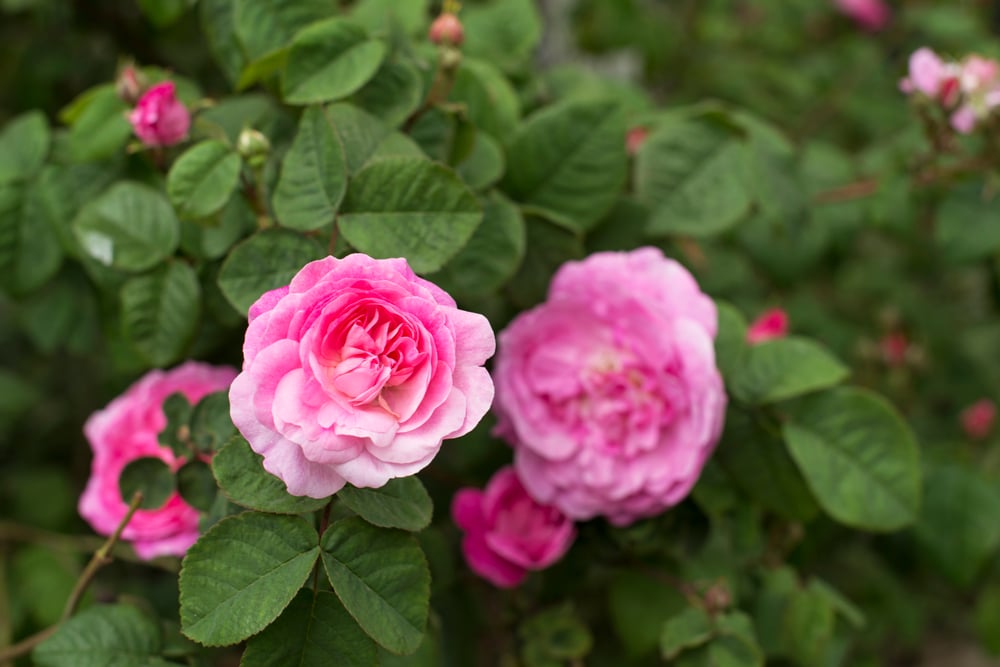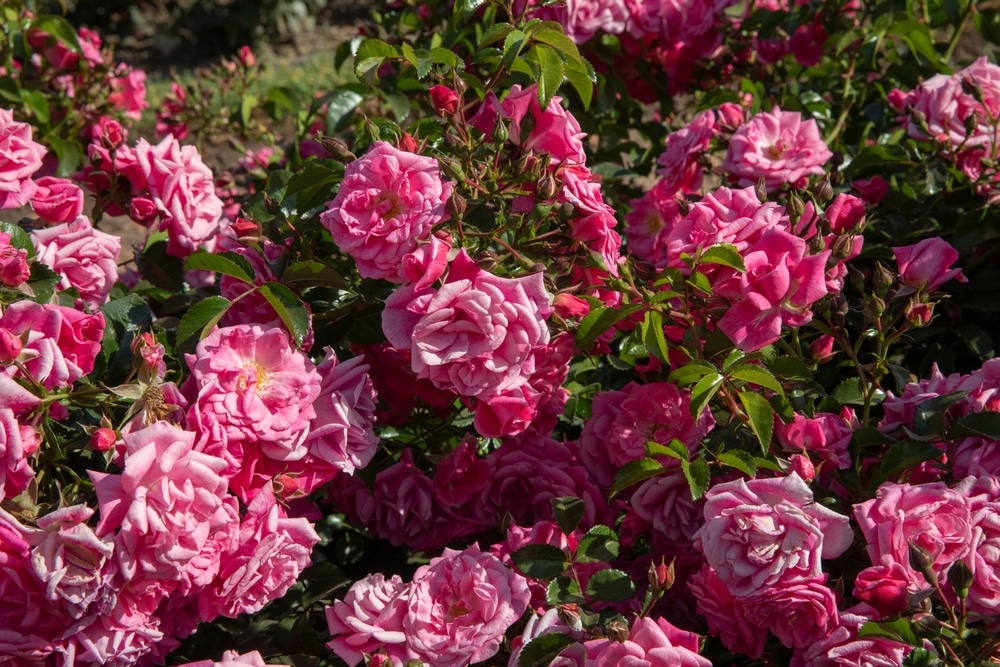The Queen’s Crown Rose is an incredible flower that can give any front lawn or garden a picturesque quality. It is a classic and elegant bloom that will steal the show and create a perfect focal point in any arrangement. For this reason, they are a very popular rose variety in the commercial flower business.

| Botanical Name | Rosa |
| Common Name | Rose |
| Plant Type | Perennial |
| Flower Color | Light pink or lavender |
| Size When Mature | 48-72 inches |
| Sun Requirements | Full sun |
| Bloom Time | Late spring to fall |
| USDA Hardiness Zones | 4-11 |
| Soil PH Range | 6.5-7 |
| Soil Type | Well-draining, slightly acidic |
| Water Needs | Medium |
| Native Area | Asia, America, Parts of Europe |
What You Need To Know About Queen’s Crown Roses
The queen’s crown rose is a variety of garden roses. Most garden roses are hybrid roses that come in many shades and are mainly ornamental. The queen’s crown rose variety is light pink or lavender and has many layers of folded petals.
The queen’s crown rose is a specific type of garden rose created for the commercial flower industry. This means that they are grown specifically to cut and sell. You can grow similar varieties in your garden, and caring for roses isn’t too difficult to figure out.
Roses are also a wonderful plant to have around the home since they are non-toxic. When they bloom during the summer months, you can trust that your pets won’t be harmed by consuming any fallen petals. Keep an eye out for thorns, though!
How To Care for Queen’s Crown Roses
Roses can give your home a significant boost of curb appeal. Keep reading to find out what you need to know about caring for garden roses.
Light
Roses happen to enjoy ample sunlight. In fact, most of them will need a minimum of four hours of direct sunlight in order to thrive. Some might tolerate a little shade as long as they get plenty of light at opportune times.
Morning light is important to plants because it helps dry out the leaves after a dewy evening.
Water and Soil Needs
Roses are a bit picky about the soil they live in. The roots mustn’t become waterlogged, so the soil needs to drain well. Unfortunately, roses need time to get an ample drink of water. This means the earth will need to retain moisture long enough that the plant gets what it needs.
A loamy, well-draining soil should be the perfect balance to protect these plants. The pH value of the soil should range from 6.5 to 7. A mostly neutral to slightly acidic environment will help this plant thrive.
How much water the rose needs can be affected by the climate and temperature of the area. One to two inches per week is often enough to keep roses happy.
Temperature Requirements
Roses tend to be fairly hearty throughout several zones in the United States. This means that they can tolerate many different temperatures. Roses can thrive in zones four through 11, depending on the specific variety.
These flowers come from around the world, so it’s hard to pinpoint an exact location. In the case of queen’s crown roses, this is even more difficult since they are a commercial breed.
Fertilizer
If you choose to fertilize roses, you should consider something high in nitrogen. There are plenty of organic fertilizer options designed specifically for roses. These are well-balanced and will give your roses a pop of vibrance.
Common Diseases
There are a few different problems that roses can be susceptible to. Fungus and mildew are among the top complaints of people that grow roses. Here are a few other common complaints about these plants:
- Black Spot
- Botrytis Blight
- Mildew
- Rust
Queen’s Crown Rose Propagation
Roses can be propagated by simply taking a cutting from the original rosebush. You can do this by cutting off a segment of a new stem, removing the leaves and flowers, and preparing it for routing. This method will require some rooting hormone and carefully monitoring of the newly planted propagate.
